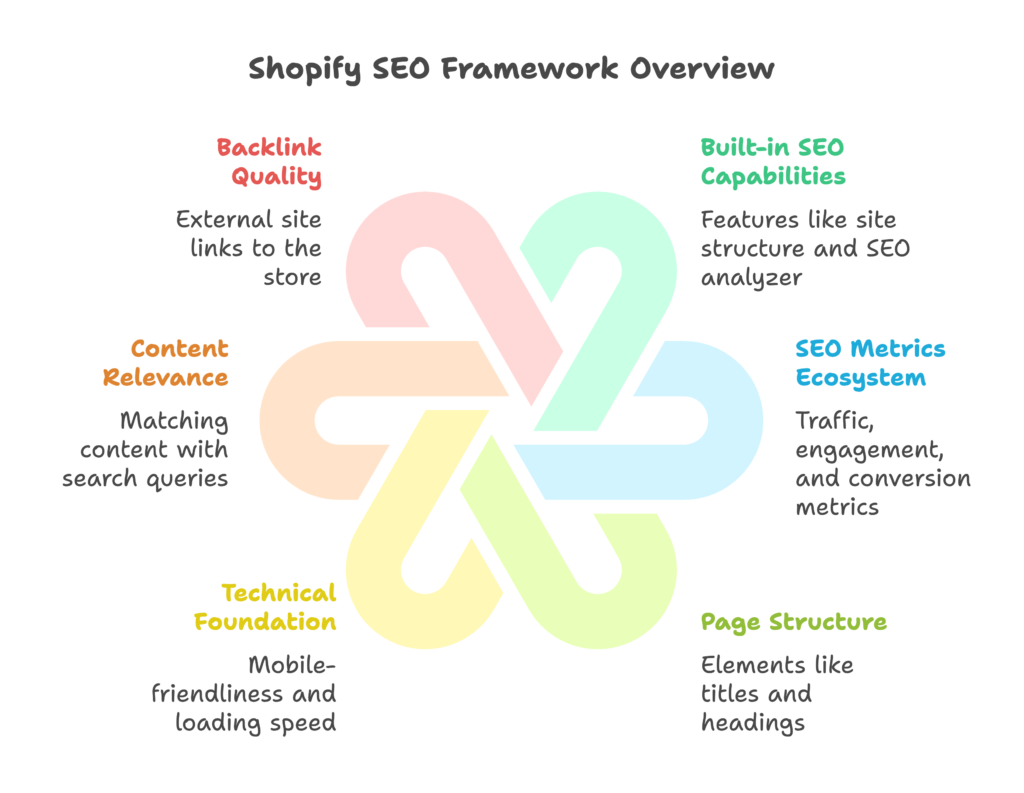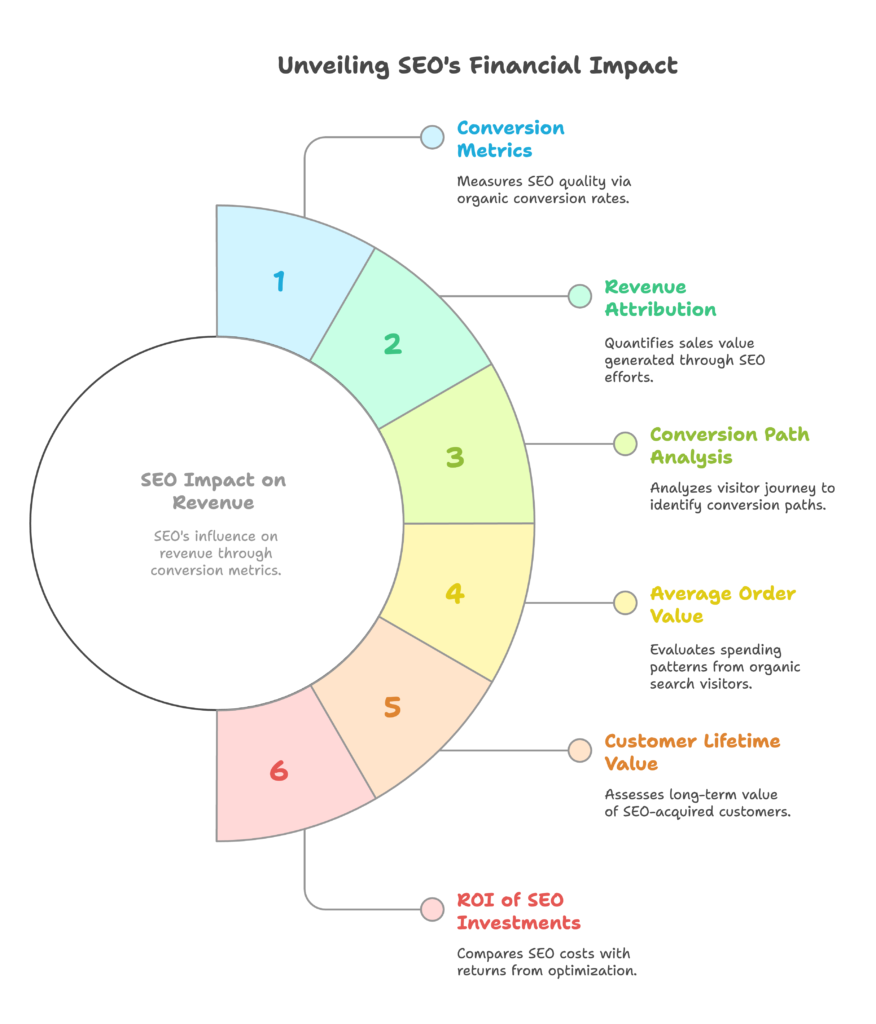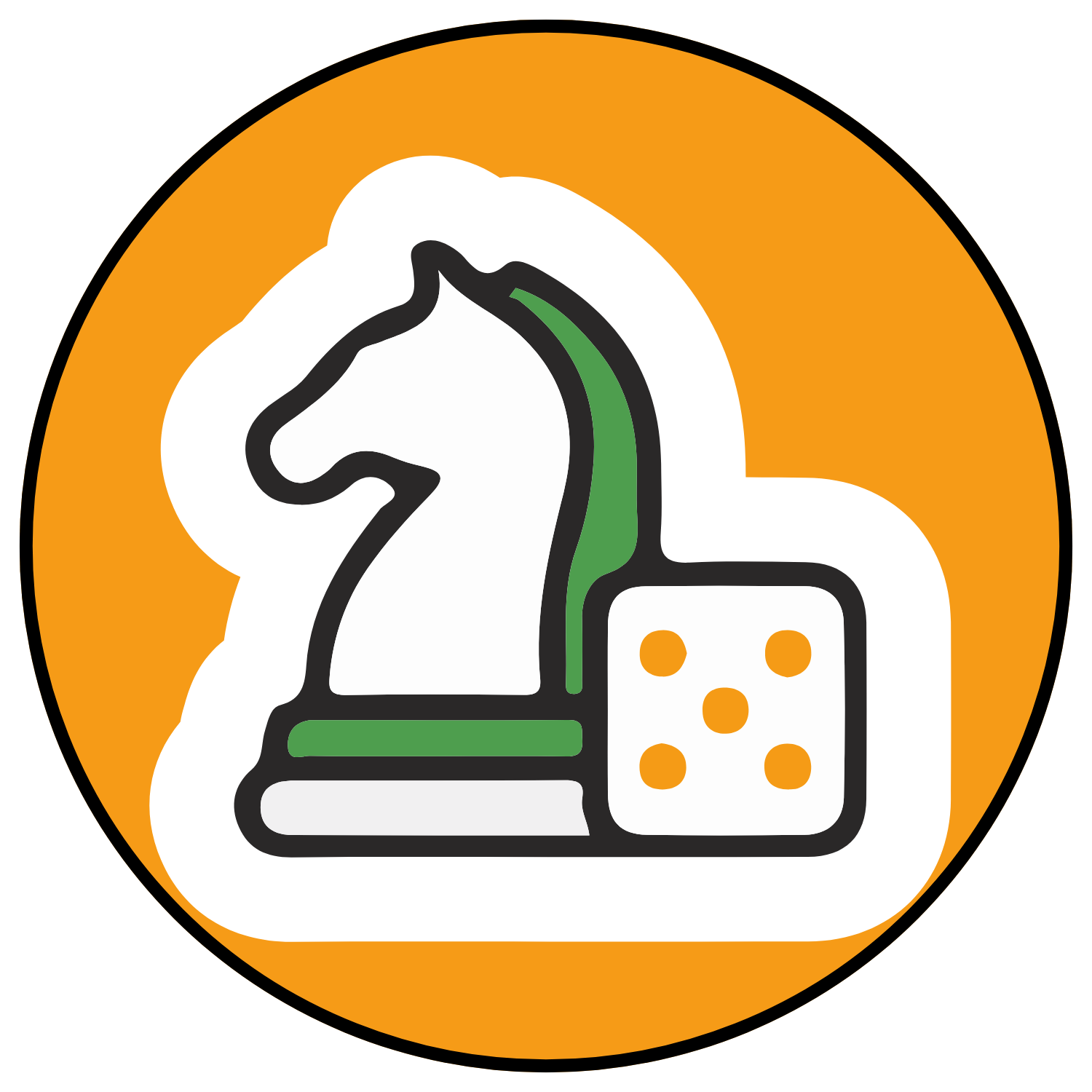Ever wondered why some Shopify stores seem to effortlessly attract floods of customers while others struggle to get noticed? The difference often boils down to one thing: mastering search engine optimization (SEO) and actually tracking what matters. In today’s digital marketplace, visibility isn’t just important—it’s everything. And without meaningful metrics to guide your efforts, you’re essentially navigating your e-commerce journey blindfolded.
Consider this eye-opener: over 93% of all web traffic comes from search engines, and for most successful Shopify stores, organic search drives more than half of their total visitors. Even more compelling? This organic traffic contributes to roughly 32% of the average Shopify store’s total revenue. These aren’t just numbers—they represent real customers and real sales you could be missing.
But here’s the challenge many store owners face: with countless metrics available, which ones actually deserve your attention? Which numbers truly indicate success, and which ones are just digital noise? By the end of this guide, you’ll know exactly which SEO metrics matter for your Shopify store, how to track them efficiently, and most importantly, how to turn those insights into actionable strategies that drive growth.
The Importance of SEO for Shopify Store Visibility
Let’s talk competitive advantage. Businesses that prioritize SEO optimization experience an average 25% increase in traffic. That’s substantial, but it gets better. SEO drives over 1,000% more traffic than organic social media for Shopify stores. Yes, you read that correctly—1,000%. And if you’re pouring money into paid advertising, consider this: Shopify stores with effective SEO strategies typically see a 30% reduction in their advertising costs. Why pay for visitors when you can earn them organically?
The visibility equation is simple but powerful. Higher search rankings mean more eyes on your products. More visibility leads to increased trust. And with trust comes conversions. It’s a virtuous cycle that begins with understanding and optimizing your search presence.
But visibility isn’t granted—it’s earned through strategic optimization. And that optimization starts with knowing where you stand. This is why SEO metrics aren’t just numbers on a dashboard; they’re the compass guiding your e-commerce ship through increasingly competitive waters.
Data-Driven Decision Making for Shopify Store Growth
Running a Shopify store without tracking SEO metrics is like driving cross-country without a map. You might eventually reach your destination, but the journey will be inefficient, frustrating, and filled with unnecessary detours. Data-driven decision making eliminates the guesswork from your strategy.
With the right metrics, you can quickly identify your high-performing content and products. What pages are bringing visitors to your store? Which product descriptions are ranking well? These insights let you double down on what’s working.
Equally important is recognizing underperforming areas. Maybe your product pages aren’t ranking as well as they should. Perhaps your blog content isn’t driving the traffic you expected. Metrics highlight these weak spots, allowing you to address issues before they impact your bottom line.
Perhaps most critically, comprehensive SEO data validates your marketing investments. When you can directly trace revenue back to specific SEO efforts, you can allocate resources with confidence, not hope. And in e-commerce, that evidence-based approach often makes the difference between thriving and merely surviving.
Before diving into specific metrics, it’s essential to establish your baseline. What’s your current search visibility? How much organic traffic are you getting? What’s your conversion rate from search visitors? These benchmarks serve as your starting point, allowing you to set realistic objectives and track your progress over time. Remember, improvement only matters when you know where you began.
Understanding Shopify’s SEO Framework
Before you can master SEO metrics for your Shopify store, you need to understand the foundation you’re building on. Shopify isn’t just an e-commerce platform—it’s an ecosystem with built-in SEO capabilities and specific ways of handling search optimization. Getting familiar with these fundamentals will make measuring and improving your SEO performance significantly more effective.

Shopify’s Built-in SEO Capabilities
Shopify doesn’t leave you starting from scratch when it comes to SEO. The platform comes with several built-in features designed to help your store rank better in search results. Your store automatically gets an SEO-friendly site structure that organizes content in a way search engines can easily understand and index. This hierarchical arrangement of collections, products, and pages creates logical pathways that both users and search engines appreciate.
Look in your Shopify admin dashboard, and you’ll find a built-in SEO analyzer. This tool reviews your store’s content and structure, highlighting areas for improvement. While not as comprehensive as dedicated SEO platforms, it provides a solid starting point for optimization efforts.
Behind the scenes, Shopify automatically generates critical technical SEO elements including your sitemap.xml and robots.txt files. These files help search engines discover and properly index your store’s content. It’s a convenience that saves you from manual technical implementation, but it’s still important to understand how these elements function within your overall SEO strategy.
Want a quick assessment of your store’s SEO health? Shopify provides an SEO score evaluation accessible through Online Store > Themes > Customize > SEO section. This score analyzes various aspects of your store’s search optimization, from metadata to content relevance. While it shouldn’t be your only measurement tool, this score offers a convenient snapshot of your store’s SEO foundation.
The SEO Metrics Ecosystem for Shopify
When measuring SEO success on Shopify, you’re really tracking three interconnected categories of metrics, each telling part of your store’s performance story.
First, there are traffic metrics—the raw numbers showing how many people visit your store from search engines. These include total visits, unique visitors, and page views. They answer the fundamental question: “Is my SEO bringing people to my store?”
Next come engagement metrics—indicators of what happens after visitors arrive. These include time on site, bounce rate (how many people leave without interacting), and pages per session. These metrics answer: “Are search visitors finding my content valuable?”
Finally, there are conversion metrics—measurements of whether visitors take desired actions. These include sales, email sign-ups, and add-to-carts. These answer the most important question: “Is my SEO traffic turning into business results?”
Shopify’s SEO evaluation criteria examine multiple dimensions of your store. Page structure looks at elements like titles and headings. Technical foundation covers aspects like mobile-friendliness and loading speed. Content relevance assesses how well your content matches search queries. Backlink quality measures external sites linking to your store. Page load speed tracks how quickly your store loads across devices. And mobile experience evaluates how well your store functions on smartphones and tablets.
Understanding this ecosystem gives you context for the specific metrics we’ll explore next. Each number tells part of your SEO story, and together they create a comprehensive picture of your store’s search performance.
Essential Traffic and Visibility Metrics
Now that you understand Shopify’s SEO framework, let’s dive into the metrics that show whether your optimization efforts are actually attracting visitors. Traffic and visibility metrics serve as the front line of your SEO analytics—they tell you if people are finding your store in search results and clicking through to see what you offer.
Organic Search Performance
The most direct indicator of SEO success is organic traffic volume—the number of visitors coming to your store through search engines without clicking on paid ads. This metric should be tracked over time, noting patterns, growth trends, and seasonal variations. A healthy SEO strategy typically shows gradual but consistent growth in organic traffic, though results rarely happen overnight.

Within your Shopify analytics or Google Analytics, examine your total organic visits over specific timeframes. Is traffic increasing month over month? Quarter over quarter? Year over year? These comparisons provide context for your performance. A sudden drop might indicate a technical issue or algorithm change, while a steady climb suggests your SEO efforts are bearing fruit.
Don’t just look at total numbers—segment your traffic. Track unique visitors from search engines to understand how many different people your SEO is reaching. New visitors versus returning visitors tells you whether you’re expanding your audience or primarily re-engaging existing customers.
Traffic source analysis adds another layer of insight. While Google dominates search with about 85% of Shopify store search traffic, tracking performance across all search engines provides a more complete picture. Geographic distribution reveals where your search visitors are located—information that might influence your content strategy or expansion plans. And with mobile searches now accounting for 60% of Shopify store visits, device type breakdown shows whether you’re effectively reaching smartphone users.
Monitoring these metrics answers a fundamental question: Are enough people finding my store through search? If not, it’s a clear signal to intensify your SEO efforts.
Keyword Performance Tracking
Beyond raw traffic numbers, you need to understand which search terms are driving visitors to your store. Keyword performance tracking provides this critical insight, showing you exactly which words and phrases are connecting searchers with your products.
Start by monitoring ranking positions for your primary and secondary keywords. Tools like Google Search Console show where your pages appear in search results for specific terms. Top positions (1-3) generally drive significantly more traffic than even spots 4-10 on the first page. If important product keywords aren’t reaching the first page, they need focused optimization.
Track ranking changes over time. Are you steadily climbing toward top positions, or have rankings plateaued? Upward movement validates your SEO strategy, while stagnation might indicate the need for fresh approaches. Watch for sudden drops too—they often signal problems requiring immediate attention.
Through keyword analysis, you can identify both ranking opportunities and threats. Maybe certain product terms are on the verge of breaking into top positions with just a little more optimization. Or perhaps competitors are beginning to outrank you for previously strong keywords. This intelligence lets you prioritize your SEO efforts where they’ll have the greatest impact.
Don’t overlook the power of long-tail keywords—longer, more specific phrases that might have lower search volume but often convert better. These contribute to approximately 70% of Shopify’s organic search traffic because they catch customers further along in the buying journey. Someone searching “black leather women’s wallet with RFID blocking” is likely closer to purchase than someone searching just “wallets.”
Product-specific keyword performance should be a particular focus for e-commerce. Which products are ranking well, and which need SEO improvement? This data often reveals opportunities to optimize product descriptions, specifications, and imagery to better match search intent.
Finally, track brand-related search term rankings. When customers search for your store name or branded products, you should dominate those results. Strong brand search performance indicates growing awareness and interest—positive signs that your broader marketing efforts are working alongside your SEO.
User Engagement and Experience Metrics
Getting visitors to your Shopify store is only the first part of SEO success. What happens after they arrive is equally important. User engagement and experience metrics reveal whether search visitors find your store valuable, usable, and worthy of their time. These metrics also significantly impact your search rankings, as search engines increasingly factor user experience into their algorithms.
On-Site Behavior Metrics
Once search visitors land on your Shopify store, do they stay and engage, or leave immediately? Engagement duration metrics provide this crucial insight. The average time spent on your site and specific pages indicates how compelling visitors find your content. Interestingly, users typically spend 2.5 times more time on pages that have been fully optimized for SEO—likely because these pages better match their search intent.
Session depth and interaction patterns tell you how extensively visitors explore your store. Are they viewing multiple products? Reading your blog content? Adding items to cart? Each interaction represents engagement and interest. When search visitors explore deeply, it suggests your SEO is attracting qualified traffic—people genuinely interested in what you offer.
Navigation and interaction patterns reveal how users move through your store. Click-through patterns and heatmap analysis (available through tools like Hotjar) visualize exactly where visitors click, scroll, and focus their attention. This behavioral data identifies both strong elements that capture interest and weak points that cause confusion or hesitation.
Internal link engagement shows whether visitors are following your navigational cues. Are they clicking on recommended products? Following links within product descriptions? Strong internal link engagement not only indicates user interest but also helps spread SEO value throughout your site.
Content consumption depth measures how thoroughly visitors engage with your written content. Do they read entire product descriptions? Scroll through your complete buying guides? Shallow engagement might indicate content that doesn’t meet visitor expectations or answer their questions fully.
These on-site behavior metrics do more than just describe visitor actions—they directly influence your search rankings. Search engines interpret strong engagement as a signal of quality and relevance, potentially boosting your positions. Conversely, poor engagement metrics like high bounce rates can hurt your SEO performance.
Technical Performance Metrics
User experience isn’t just about content—it’s also about how your store functions technically. Page speed and loading metrics have become increasingly important SEO factors, directly affecting both user experience and search rankings.
The impact of speed is dramatic: pages loading within 2 seconds reduce bounce rates by approximately 45% compared to slower pages. Every second counts when it comes to keeping potential customers engaged. Through Google’s PageSpeed Insights or Shopify’s own analytics, monitor your loading performance regularly.
Pay special attention to mobile vs. desktop performance disparities. Mobile users often have less patience for slow-loading sites, yet many Shopify stores load significantly slower on mobile devices than on desktop computers. With mobile accounting for the majority of e-commerce traffic, this gap represents a critical optimization opportunity.
Core Web Vitals—Google’s specific metrics for user experience—deserve particular attention. These include Largest Contentful Paint (measuring loading performance), First Input Delay (measuring interactivity), and Cumulative Layout Shift (measuring visual stability). Google now explicitly uses these metrics as ranking factors, making them essential to track.
Mobile optimization metrics have become central to SEO success. Mobile bounce rate typically decreases by around 20% when stores are properly optimized for smartphone users. Mobile conversion rate improves by approximately 15% with thorough optimization. And your mobile usability score (available in Google Search Console) identifies specific issues affecting smartphone users.
Remember, technical performance isn’t just about satisfying search engines—it’s about providing the seamless experience that converts visitors into customers. Every second saved in loading time, every frustration eliminated from mobile browsing, contributes to both better rankings and improved conversion rates.
Conversion and Revenue Impact Metrics
Traffic and engagement metrics matter, but ultimately, your Shopify store exists to generate sales. That’s why conversion and revenue metrics represent the bottom line of SEO success. These numbers translate your search visibility into business results, showing the actual financial impact of your optimization efforts.

SEO-Driven Conversion Metrics
Your organic conversion rate—the percentage of search visitors who complete desired actions—serves as the most direct measure of SEO quality. The average Shopify store achieves an SEO conversion rate of approximately 3.5% across industries, though this varies significantly by product category. How does your store compare to this benchmark?
What makes SEO traffic particularly valuable is its quality. SEO traffic typically has a 50% higher conversion rate than pay-per-click (PPC) traffic. Why? Because organic search visitors often have higher intent and trust. They’ve found you through a natural search process rather than clicking an ad, indicating genuine interest in your offerings.
The power of high search rankings becomes clear when you examine conversion data by position. Shopify stores appearing on the first page of search results experience conversion rates approximately 60% higher than those relegated to the second page or beyond. This dramatic difference underscores why climbing to top positions should be a priority for high-commercial-intent keywords.
Beyond the overall conversion rate, conversion path analysis reveals how organic visitors move toward purchase. Landing page performance evaluation shows which entry points from search results convert best. Are product pages converting better than category pages? Do blog posts eventually lead to sales? This intelligence helps prioritize which pages deserve the most SEO attention.
Analyze your conversion funnel progression from organic traffic. Where do search visitors drop off? Do they add products to cart but abandon before checkout? Do they browse multiple products but never add any to cart? These patterns highlight potential friction points in your sales process that need addressing.
Don’t overlook assisted conversions from organic search—instances where search visits contribute to conversions without being the final touchpoint. A customer might find you through search, leave, and later return directly to make a purchase. Attribution models in Google Analytics help capture this fuller picture of SEO’s conversion impact.
Revenue Attribution Metrics
Beyond conversion counts, revenue attribution metrics quantify the actual sales value generated through SEO. Direct revenue from organic search visitors represents the clearest measure of SEO’s financial impact. What percentage of your total sales comes from organic search? How has this changed as your SEO efforts have progressed?
Look beyond transaction counts to examine the average order value from organic traffic. Do search visitors spend more or less than visitors from other channels? Higher average orders from SEO traffic might indicate that search is bringing particularly qualified customers, justifying even greater investment in optimization.
For the fullest picture of SEO’s value, track the customer lifetime value from SEO-acquired customers. Do customers who discover you through search become repeat buyers? Do they have higher retention rates than customers from other channels? This long-term perspective often reveals that SEO’s real value exceeds what’s captured in immediate conversion metrics.
To justify and guide your SEO investments, calculate ROI for your optimization efforts. Compare the cost per acquisition from SEO with other channels like social media or paid advertising. Despite SEO’s upfront investment and longer timeline, its cost per acquisition is typically lower in the long run, often delivering customers at 30-40% lower cost than paid channels.
Measure your SEO investment to revenue ratio to understand efficiency. What revenue do you generate for each dollar spent on optimization? This ratio helps determine whether to increase, maintain, or adjust your SEO budget based on actual returns.
Finally, assess the long-term revenue impact of ranking improvements. When you achieve first-page rankings for key terms, how does this translate to revenue growth over time? This perspective helps you value SEO as a long-term asset rather than just a marketing expense.
Advanced SEO Analytics for Shopify
If you’ve mastered the fundamentals of Shopify SEO metrics, it’s time to elevate your analysis with advanced measurements. These sophisticated analytics reveal deeper insights about your technical foundation, content performance, and competitive position. While more complex, these metrics often identify the highest-impact opportunities for stores already performing well in search.
Technical SEO Performance Metrics
The technical health of your Shopify store forms the foundation of SEO success. Crawlability and indexation metrics reveal how effectively search engines can discover and process your content. Through Google Search Console, monitor your crawl stats and coverage reporting to understand how often search engines visit your store and what they find.
Track your indexation rate—the percentage of your pages that appear in search results. Declining indexation might indicate technical barriers preventing search engines from properly processing your content. Surprisingly, crawling and indexing errors affect approximately 25% of Shopify sites, often without owners realizing the impact on their visibility.
Structured data performance has become increasingly important as search results evolve. Rich snippet appearance rate measures how often your products appear with enhanced features in search results, such as star ratings, prices, or availability information. These enhanced listings can increase click-through rates by approximately 30%, making structured data a powerful technical optimization.
Evaluate your schema implementation effectiveness through Google’s Rich Results Test. Are you using all applicable schema types for your products? Is your markup being correctly interpreted? Complete and accurate structured data gives search engines more contextual information about your products, potentially improving both rankings and click-through rates.
For technically advanced store owners, server response time and resource loading waterfalls (available through tools like GTmetrix) provide granular insights into performance bottlenecks. Addressing these technical factors can significantly improve both user experience and search rankings.
Content Performance Analytics
Beyond technical foundations, sophisticated content analysis reveals which elements of your store truly resonate with both visitors and search engines. Content engagement metrics identify your top-performing pages by both traffic and conversions. Which product descriptions attract the most organic visitors? Which blog posts drive the most sales? This intelligence helps you replicate successful content patterns across your store.
Content gap analysis compares your keyword coverage against competitors to find opportunities. Are there valuable search terms your competitors rank for that your store doesn’t address? These gaps represent growth potential through targeted content creation.
Product page optimization impact tracking reveals the ROI of content improvements. Optimized product pages typically see 48% more traffic than non-optimized ones. By measuring before-and-after performance when you enhance product content, you can quantify the value of these efforts and justify further investment.
Internal linking effectiveness metrics measure how well your site’s link structure distributes search equity. Internal linking can boost page rankings by approximately 18% when done strategically. Analyze how authority flows through your site—are important product pages receiving sufficient internal links? Tools like Screaming Frog can visualize your internal link structure, highlighting potential improvements.
Link equity distribution analysis examines whether your site’s authority is concentrated or spread effectively. Navigation path optimization results show whether visitors can easily find important content. Enhanced internal linking not only improves SEO but also guides visitors toward conversion opportunities.
Content freshness metrics track how regularly you update your store. Search engines favor recently updated content, especially for product pages where accuracy is crucial. Establish a schedule for content review based on performance data, prioritizing high-value pages for regular refreshes.
Implementing a Comprehensive SEO Measurement Strategy
Understanding individual SEO metrics is valuable, but the real power comes from implementing a cohesive measurement system. A comprehensive strategy turns disconnected data points into actionable intelligence, creating a continuous cycle of measurement, learning, and improvement for your Shopify store.
Setting Up Shopify Analytics and Reporting
Begin by fully configuring Shopify’s built-in analytics capabilities. While many store owners access basic reports, fewer take advantage of the platform’s complete analytics system. Real-time reporting allows you to monitor sales and profit as they happen, providing immediate feedback on SEO performance changes. Customer behavior tracking reveals how visitors from search engines navigate your store, highlighting both effective pathways and potential friction points.
Shopify enables exportable reports for deeper analysis in spreadsheets or dedicated analytics platforms. These exports allow you to combine SEO data with other business metrics for comprehensive performance reviews. Create customized reports focusing on your specific SEO goals, whether that’s increasing product visibility, improving category page performance, or enhancing mobile conversion rates.
For measuring marketing and SEO effectiveness specifically, configure traffic source reporting to isolate organic search performance from other channels. This segmentation clarifies which traffic improvements come from SEO rather than paid advertising or social media efforts. Set up SEO reporting to track keyword performance in search rankings, tying position changes to traffic and revenue impacts.
Marketing campaign analysis should incorporate SEO components to measure the return on investment from optimization efforts. For instance, when launching new product categories, track both the immediate results from promotional campaigns and the long-term organic search visibility that develops over time.
While Shopify’s native analytics provide solid foundations, most serious store owners eventually connect Google Analytics for deeper insights. This integration enables more sophisticated attribution modeling, user flow analysis, and cohort tracking of search visitors over time.
Creating a Sustainable Measurement Framework
Even the best analytics setup provides little value without a consistent review process. Establish a regular reporting cadence that balances timely insights with sustainable workload. Daily monitoring should focus on critical alerts and significant traffic changes that might indicate technical problems requiring immediate attention.
Weekly performance reviews provide the right frequency for most tactical SEO metrics. This timeframe allows enough data accumulation to identify meaningful patterns while enabling quick adjustments to ongoing optimization efforts. Review key metrics like organic traffic trends, position changes for important keywords, and conversion rates from search visitors.
Monthly comprehensive analysis offers the perspective needed for strategic decisions. This deeper review should examine broader patterns, competitive position changes, and the alignment between SEO performance and overall business goals. Monthly reviews also provide the right cadence for updating stakeholders and planning upcoming optimization priorities.
Translating metrics into specific optimization tasks represents the crucial bridge between measurement and improvement. Rather than getting lost in data, identify the 2-3 highest-impact actions revealed by your metrics each review cycle. Perhaps your mobile bounce rate indicates a need for responsive design improvements. Maybe declining click-through rates suggest title tag enhancements. By connecting metrics directly to specific tasks, you maintain a continuous improvement cycle.
Prioritize improvements based on potential impact, focusing first on changes that address both search visibility and conversion obstacles. A page that ranks poorly but converts well when visited deserves optimization attention, as does a highly-visible page with poor engagement metrics.
Testing and measuring optimization effectiveness completes the SEO measurement cycle. For significant changes, implement A/B testing where possible to quantify improvements. Document baseline metrics before making changes, then track the specific impact of each optimization. This disciplined approach transforms SEO from a hopeful activity into a data-validated business process.
References
- Shopify 101. (n.d.). Rhode Island Small Business Development Center. https://web.uri.edu/risbdc/wp-content/uploads/sites/987/Shopify-101.pdf
- Media Search Group. (2025, January 14). How To Track Shopify SEO Performance & Metrics (2025). https://www.mediasearchgroup.com/blog/how-to-track-shopify-seo-performance-metrics-2025
- Praella. (2024, November 29). Shopify SEO Best Practices: Elevate Your E-commerce Store’s Visibility. https://praella.com/blogs/shopify-insights/shopify-seo-best-practices-elevate-your-e-commerce-store-s-visibility
- SEO Sandwitch. (2024, November 19). Shopify SEO Stats: Key Metrics and Trends. https://seosandwitch.com/shopify-seo-stats/
- Shopify. (2024). Shopify Analytics and Reports Documentation. https://help.shopify.com/en/manual/reports-and-analytics
Ready to supercharge your Shopify store’s sales with perfectly optimized campaigns that boost your SEO performance? Growth Suite is a Shopify app that helps you create effective on-site discount and email collection campaigns that improve engagement metrics and drive conversions. By analyzing your products, collections, customers, and visitor behavior, Growth Suite provides valuable insights while helping you implement the winning strategies we’ve discussed in this article. Install it today with a single click and start seeing results!
Checkout our other articles to learn more for Shopify SEO & content marketing.




